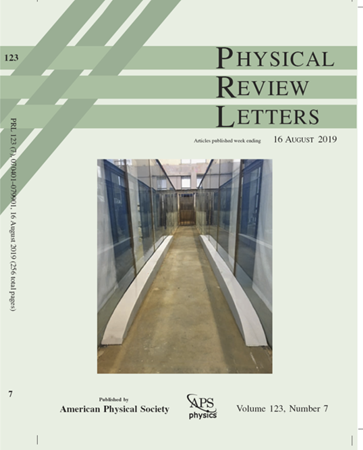Practical Framework for Analyzing High-Dimensional Quantum Key Distribution Setups
IF 9
1区 物理与天体物理
Q1 PHYSICS, MULTIDISCIPLINARY
引用次数: 0
Abstract
High-dimensional (HD) entanglement promises both enhanced key rates and overcoming obstacles faced by modern-day quantum communication. However, modern convex optimization-based security arguments are limited by computational constraints; thus, accessible dimensions are far exceeded by progress in HD photonics, bringing forth a need for efficient methods to compute key rates for large encoding dimensions. In response to this problem, we present a flexible analytic framework facilitated by the dual of a semidefinite program and diagonalizing operators inspired by entanglement-witness theory, enabling the efficient computation of key rates in high-dimensional systems. To facilitate the latter, we show how matrix completion techniques can be incorporated to effectively yield improved, computable bounds on the key rate in paradigmatic high-dimensional systems of time- or frequency-bin entangled photons and beyond, revealing the potential for very high-dimensions to surpass low dimensional protocols already with existing technology. In our accompanying work, (F. Kanitschar and M. Huber, Composable finite-size security of high-dimensional quantum key distribution protocols), available on arXiv, we show how our findings can be used to establish finite-size security against coherent attacks for general HD-QKD protocols both in the fixed- and variable-length scenario.分析高维量子密钥分配设置的实用框架
高维(HD)纠缠既能提高密钥速率,又能克服现代量子通信面临的障碍。然而,现代基于凸优化的安全参数受到计算约束的限制;因此,高清光子学的进步远远超过了可访问的尺寸,这就需要有效的方法来计算大编码尺寸的密钥速率。针对这一问题,我们提出了一种灵活的分析框架,利用半定规划的对偶和纠缠-见证理论启发的对角算子,实现了高维系统中关键速率的高效计算。为了促进后者,我们展示了如何将矩阵补全技术结合起来,有效地在时间或频率本纠缠光子的范例高维系统中产生改进的、可计算的关键速率边界,揭示了非常高维超越现有技术的低维协议的潜力。在我们的相关工作中,(F. Kanitschar和M. Huber,高维量子密钥分发协议的可组合有限大小安全性),可在arXiv上获得,我们展示了我们的发现如何用于在固定长度和可变长度场景中为一般HD-QKD协议建立针对连贯攻击的有限大小安全性。2025年由美国物理学会出版
本文章由计算机程序翻译,如有差异,请以英文原文为准。
求助全文
约1分钟内获得全文
求助全文
来源期刊

Physical review letters
物理-物理:综合
CiteScore
16.50
自引率
7.00%
发文量
2673
审稿时长
2.2 months
期刊介绍:
Physical review letters(PRL)covers the full range of applied, fundamental, and interdisciplinary physics research topics:
General physics, including statistical and quantum mechanics and quantum information
Gravitation, astrophysics, and cosmology
Elementary particles and fields
Nuclear physics
Atomic, molecular, and optical physics
Nonlinear dynamics, fluid dynamics, and classical optics
Plasma and beam physics
Condensed matter and materials physics
Polymers, soft matter, biological, climate and interdisciplinary physics, including networks
 求助内容:
求助内容: 应助结果提醒方式:
应助结果提醒方式:


